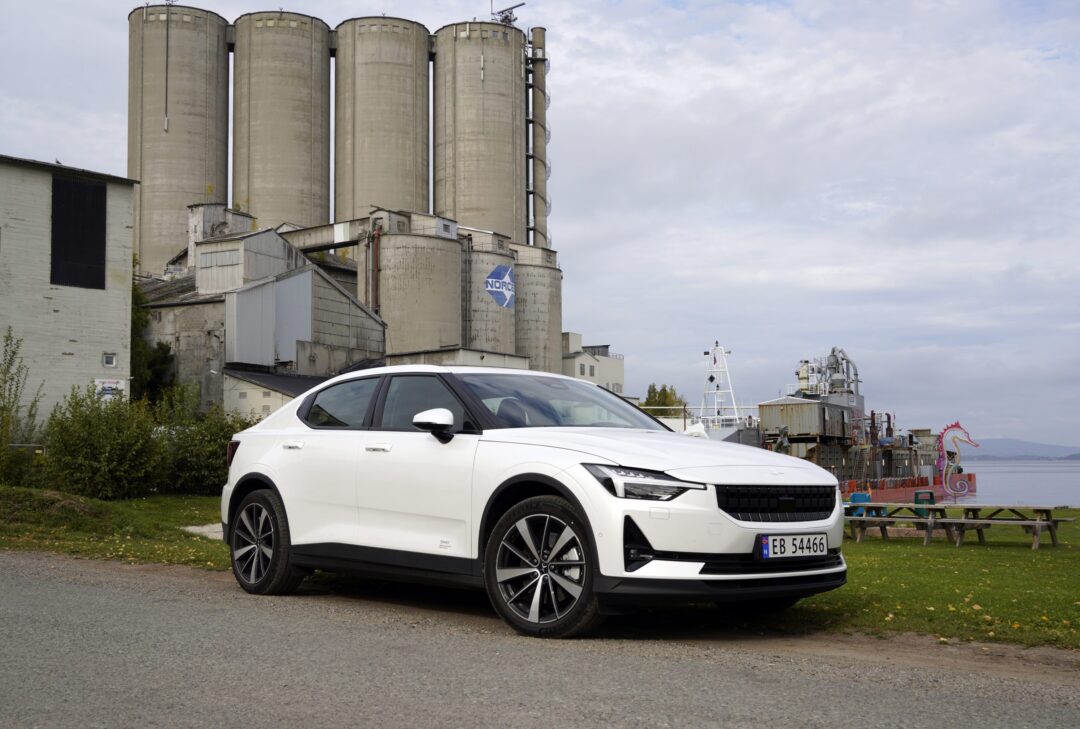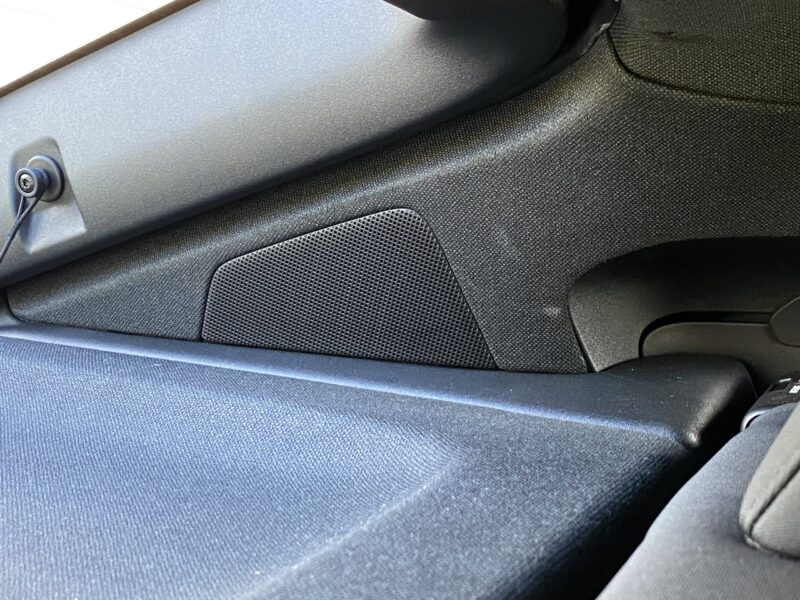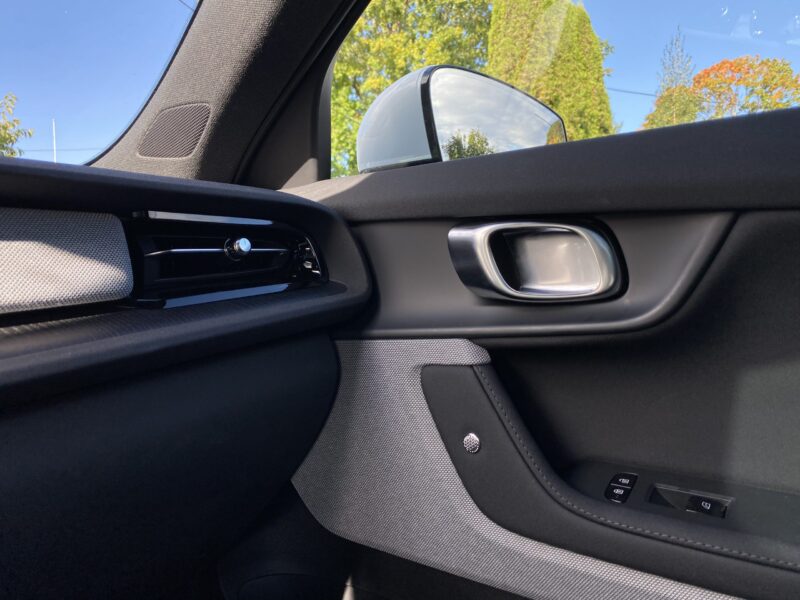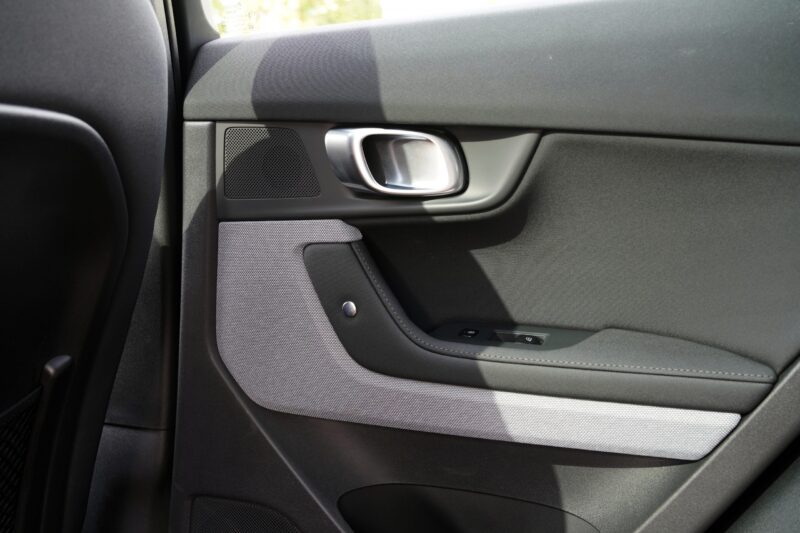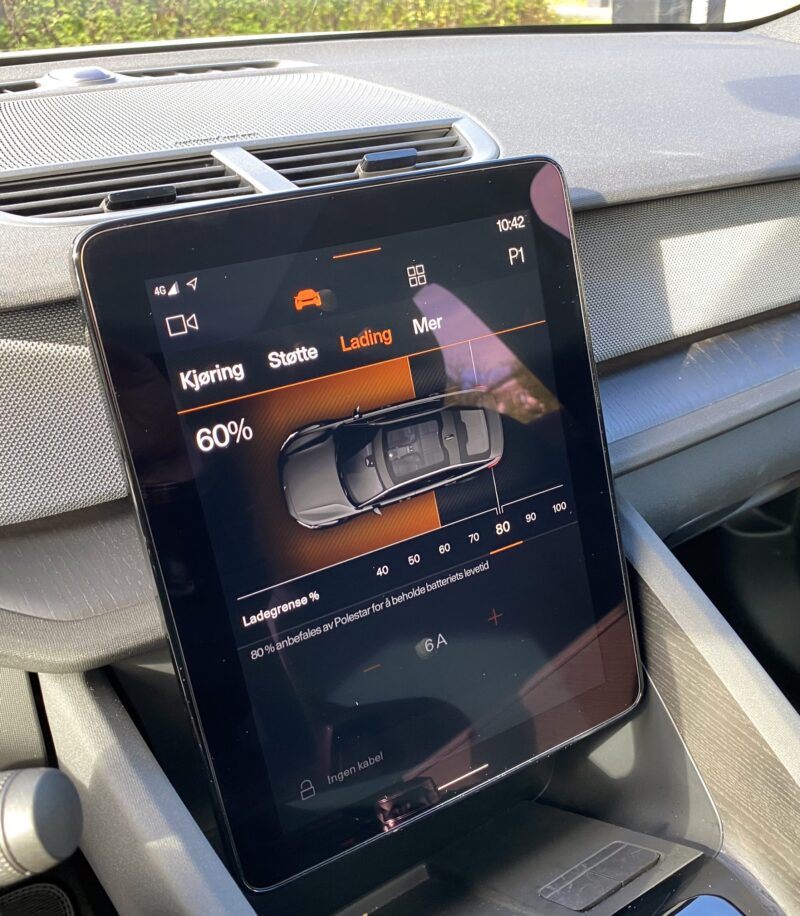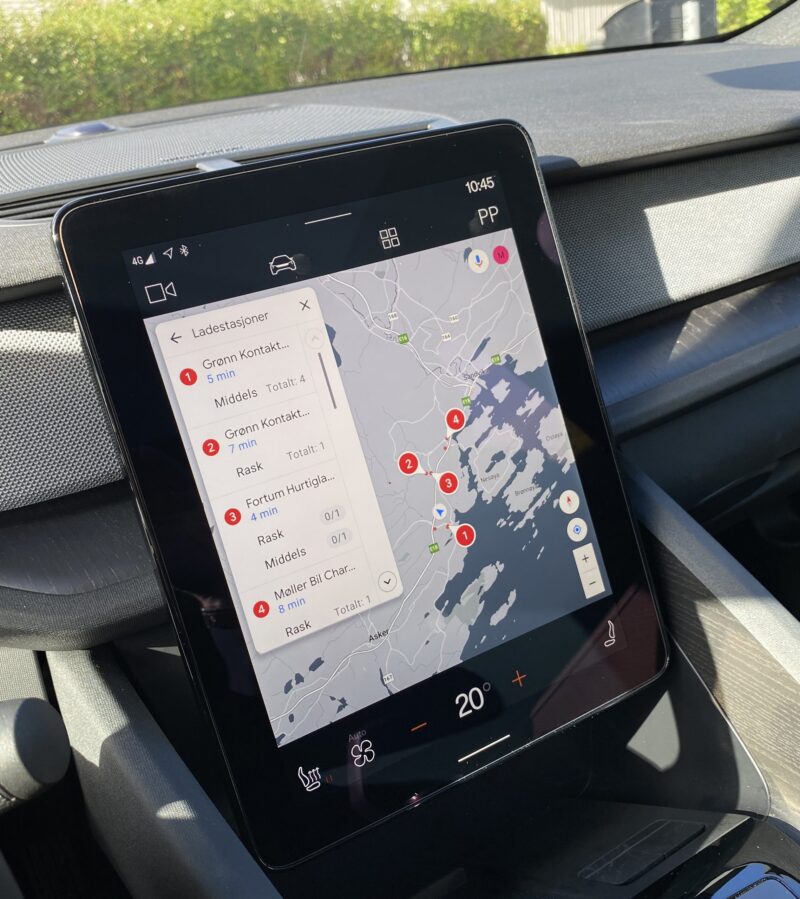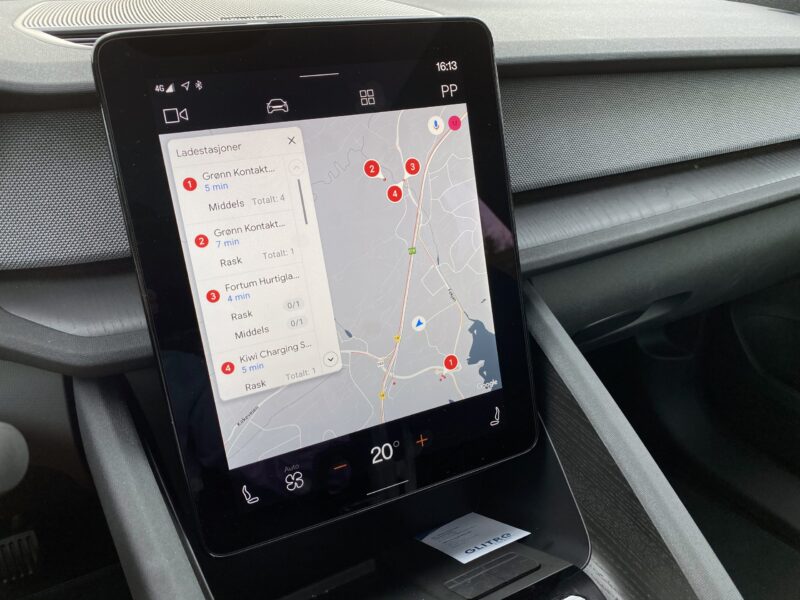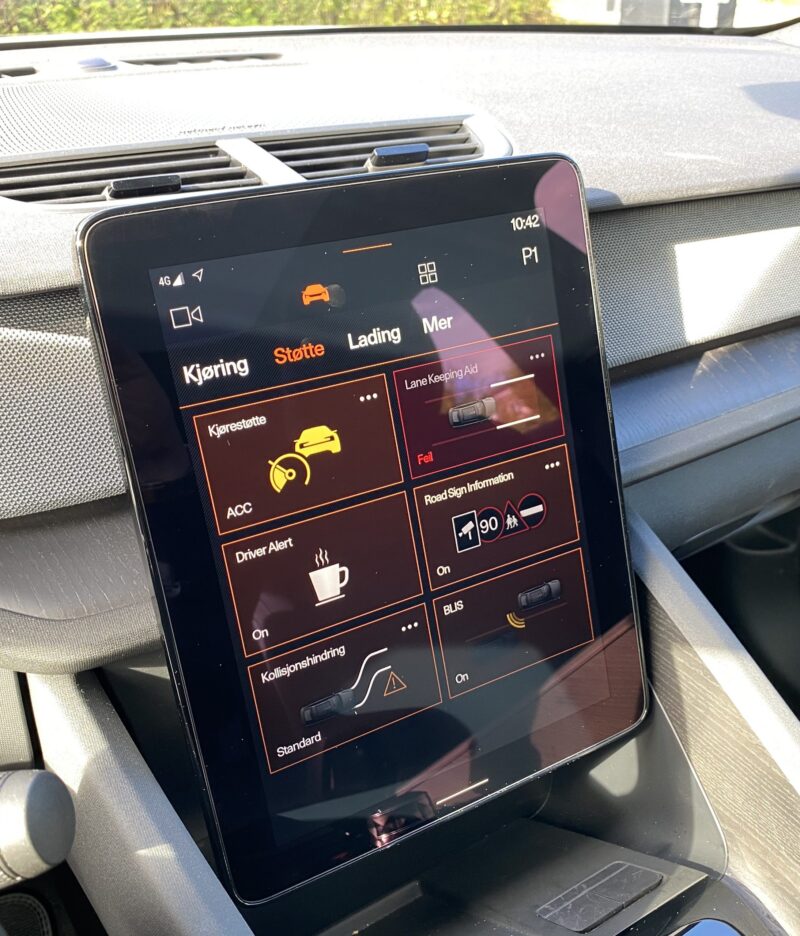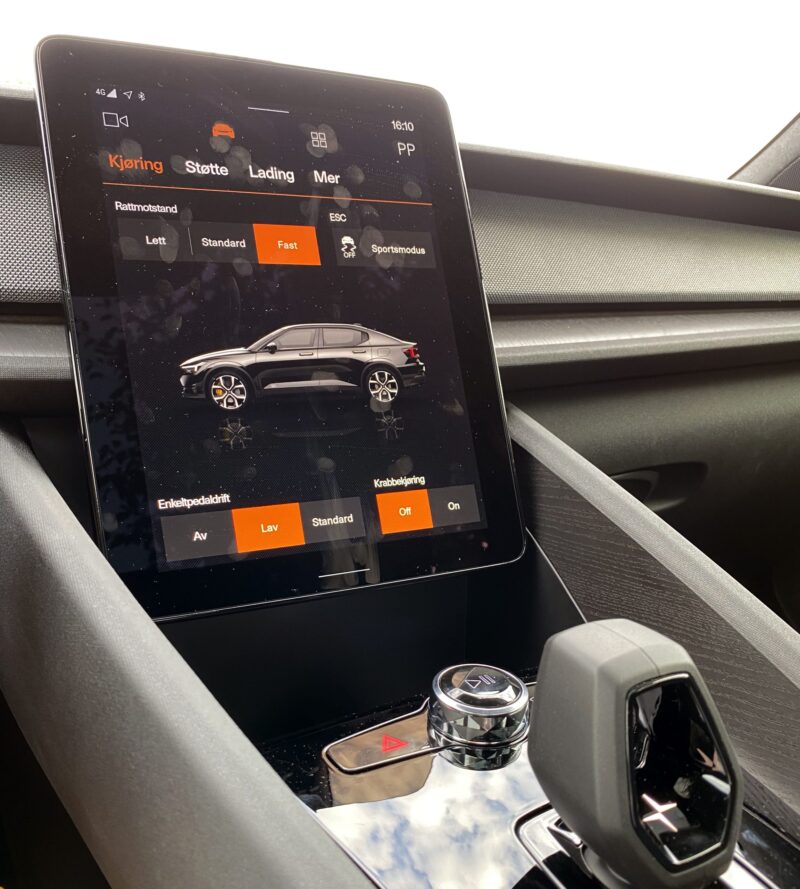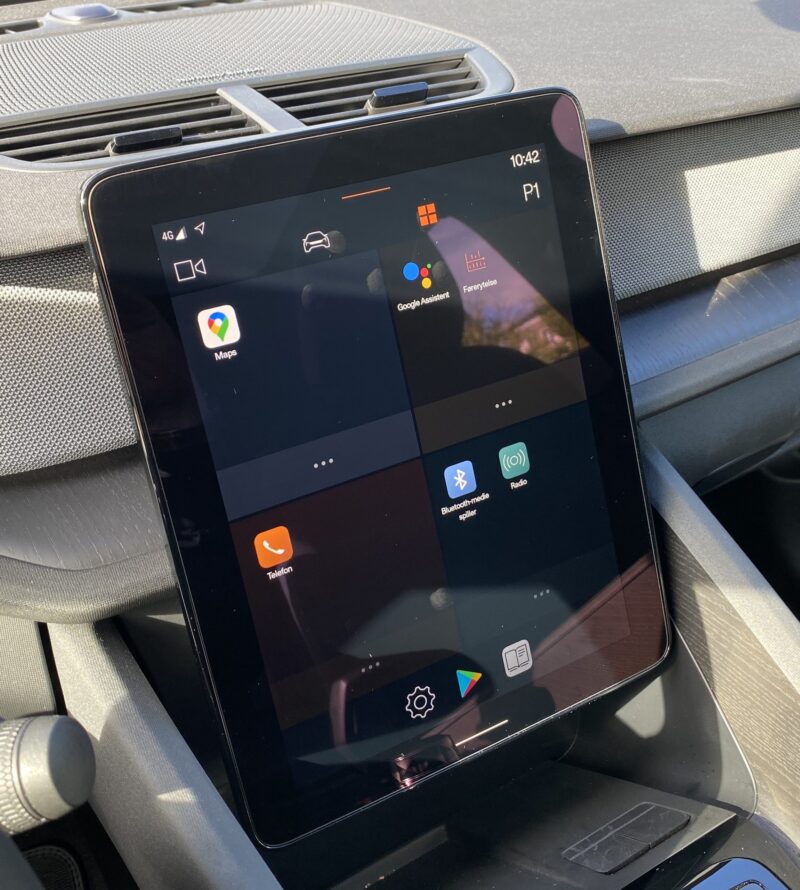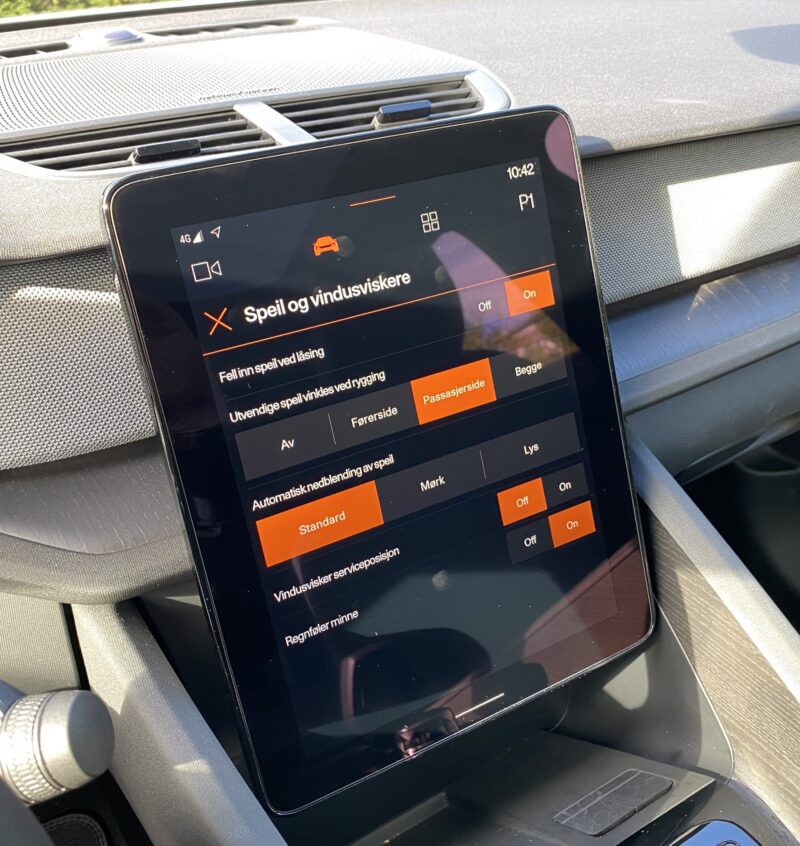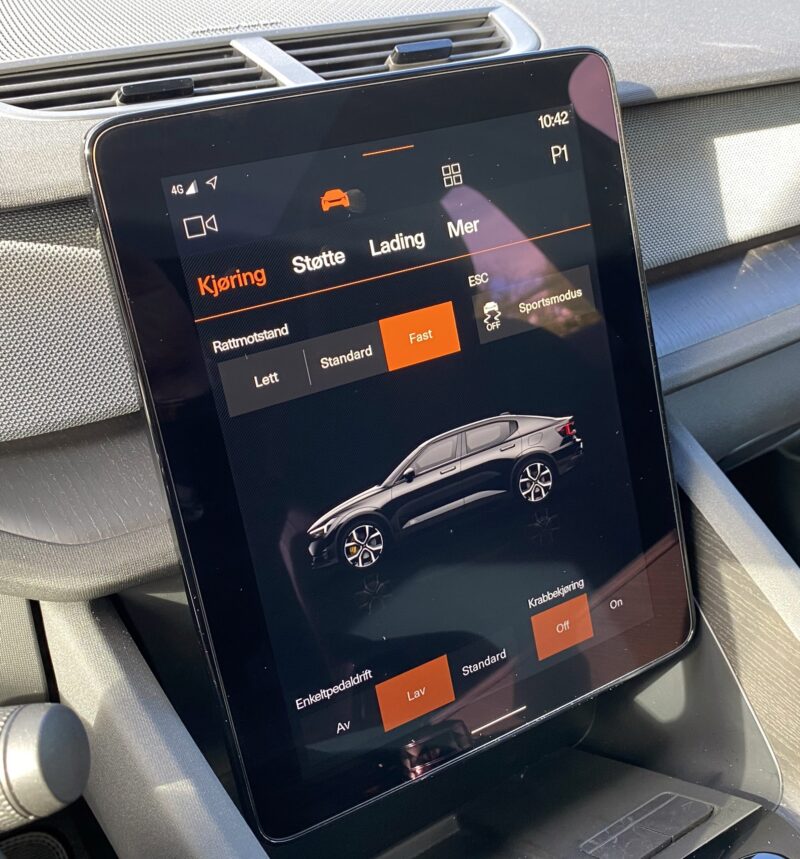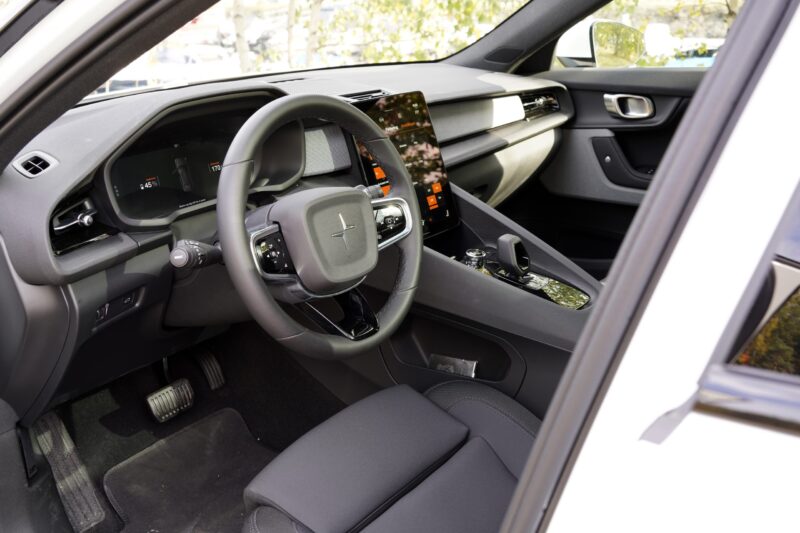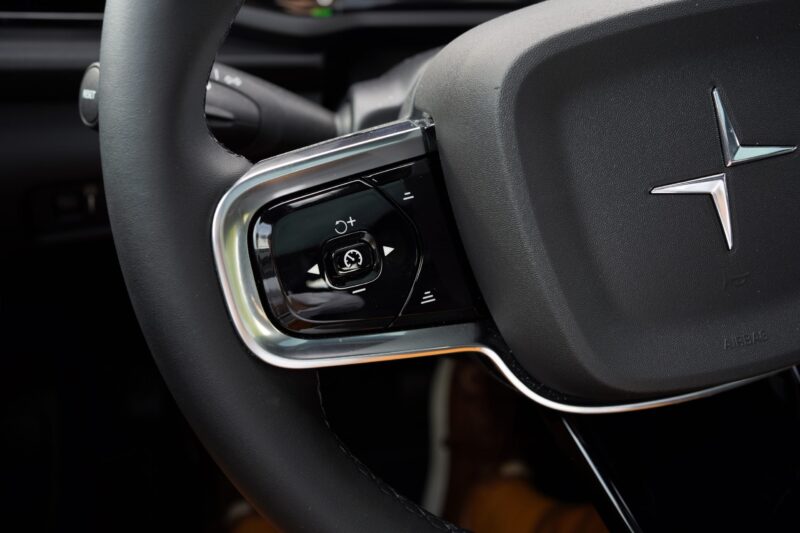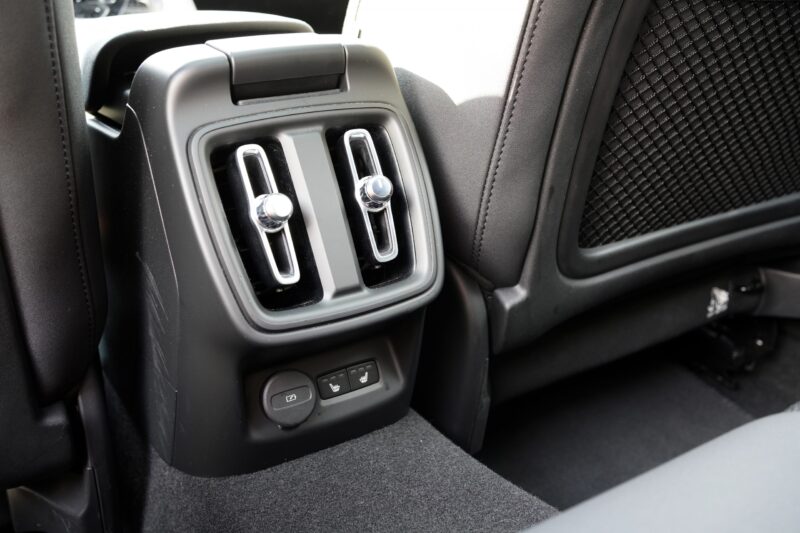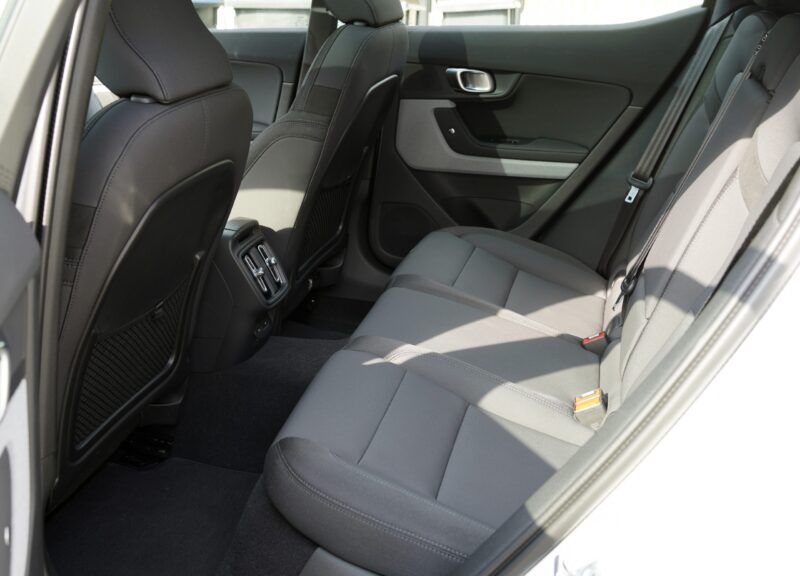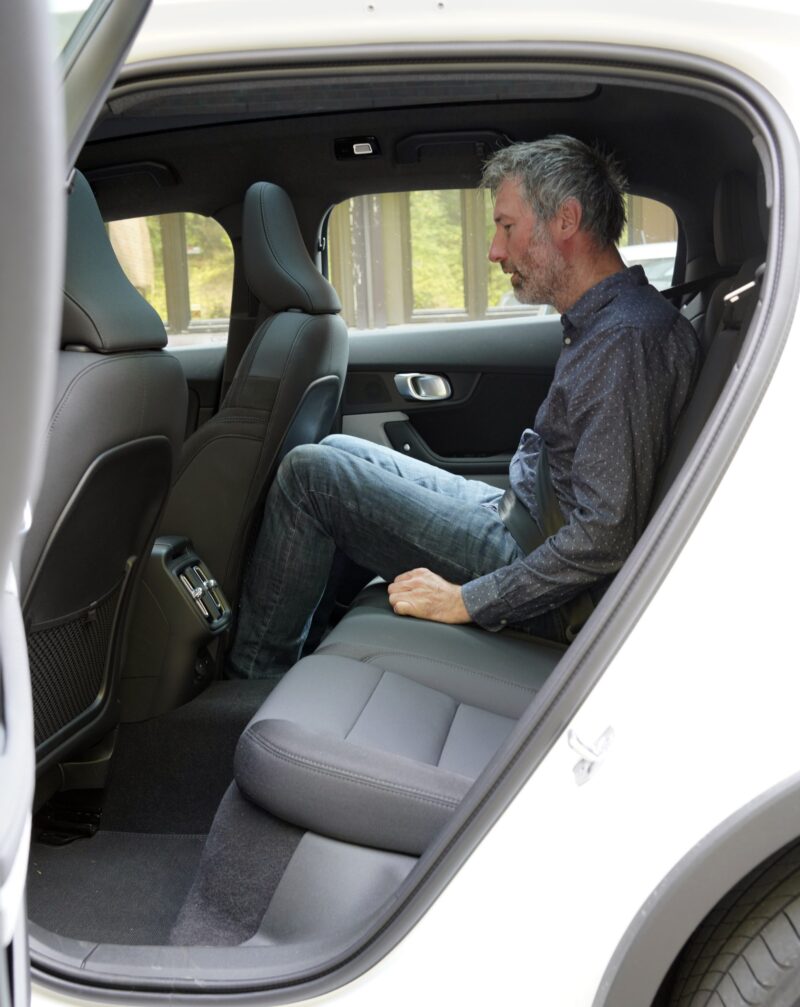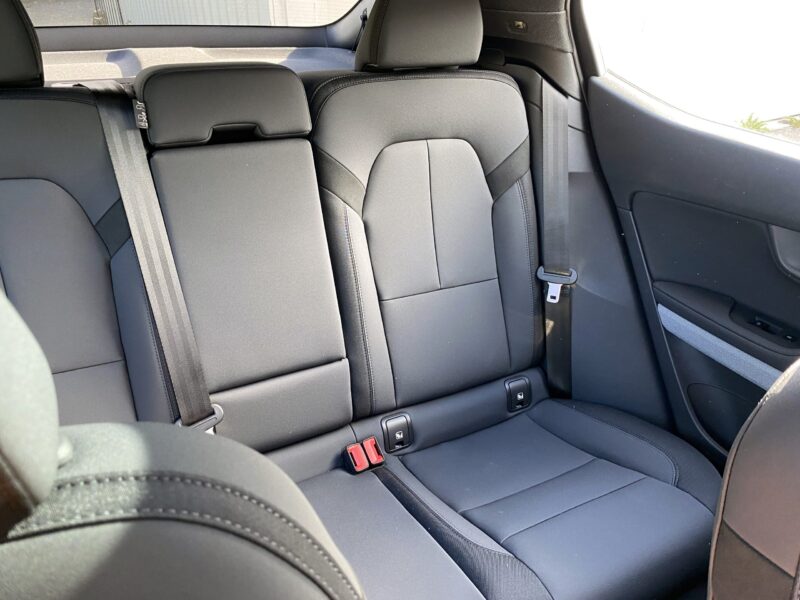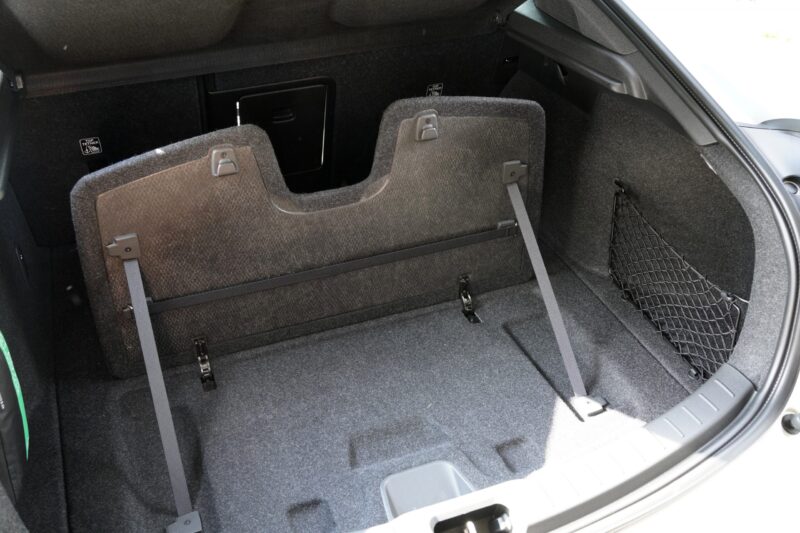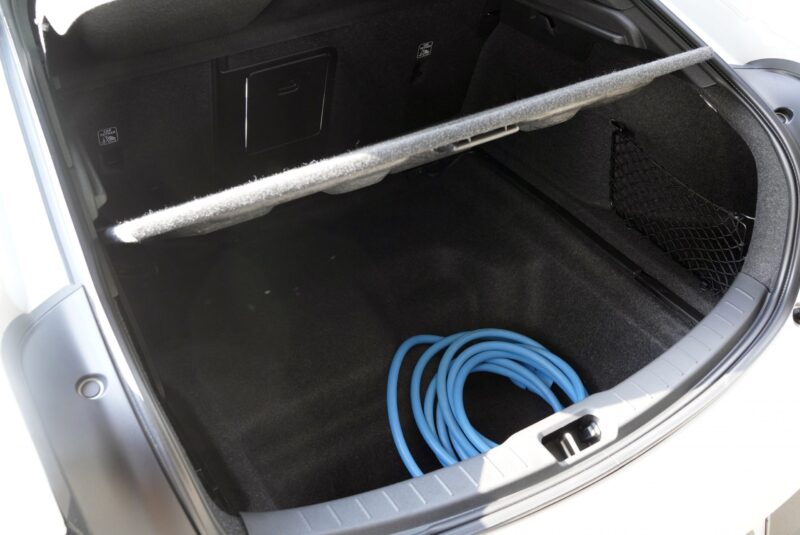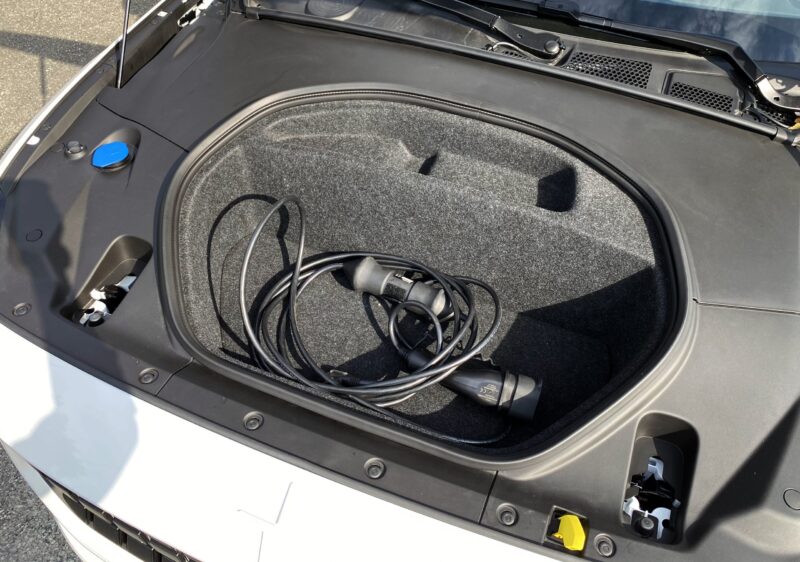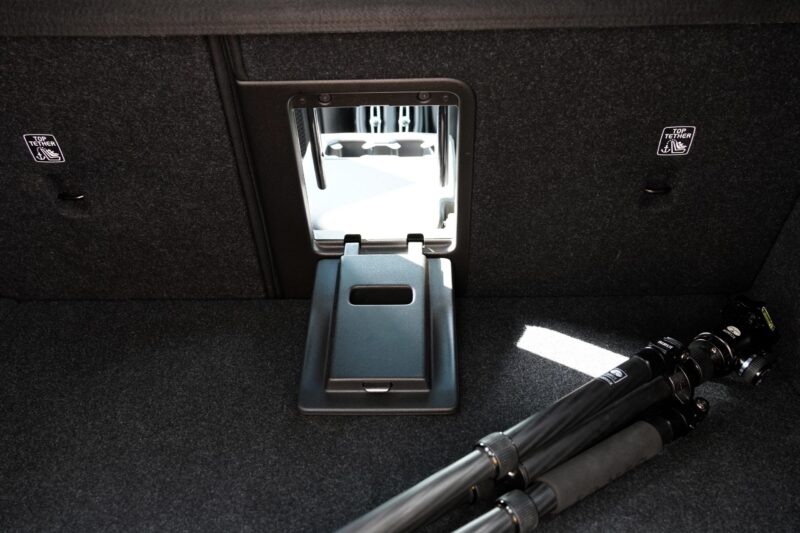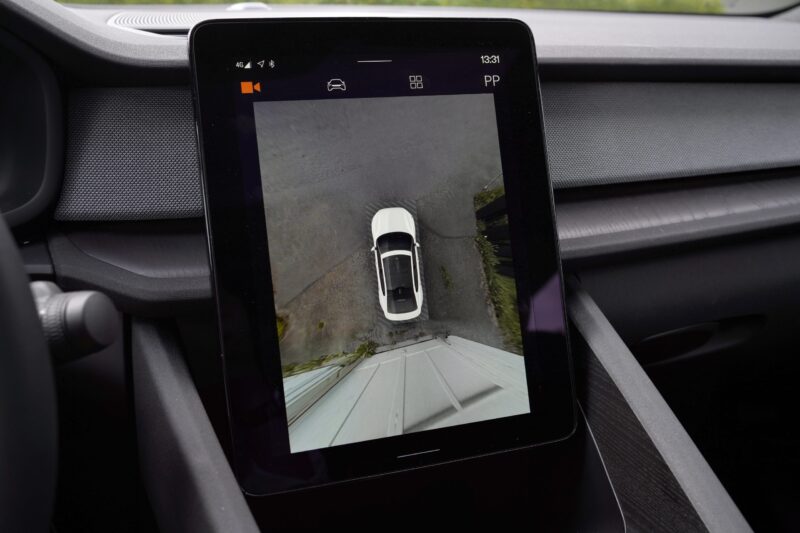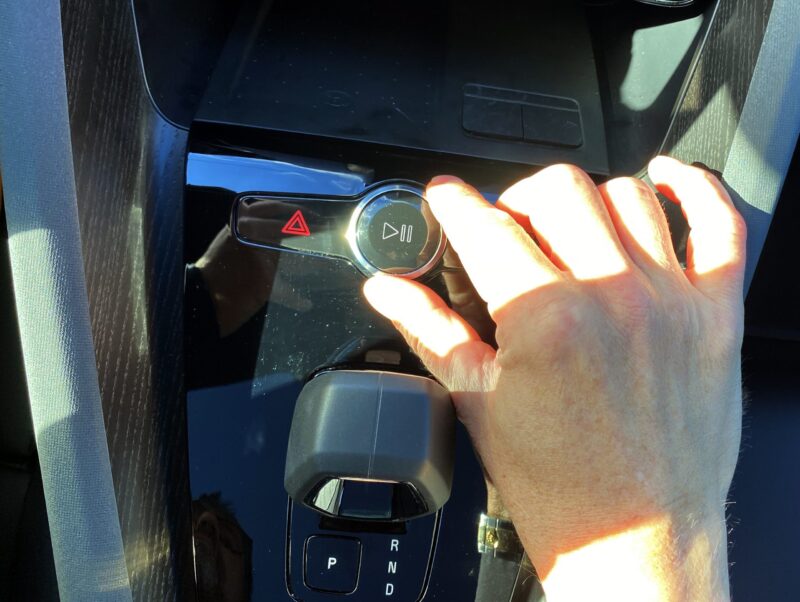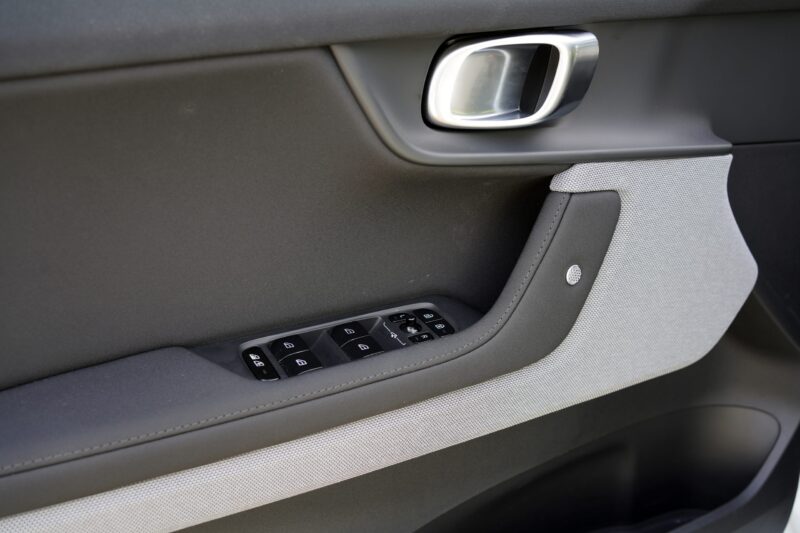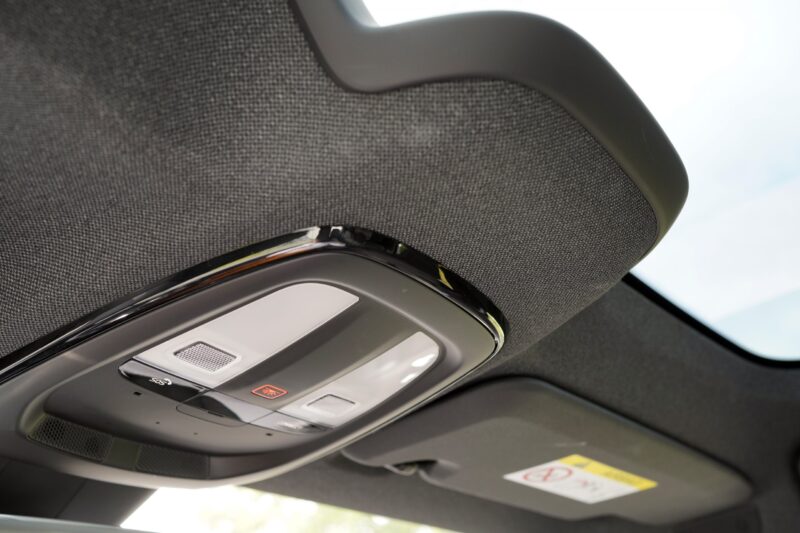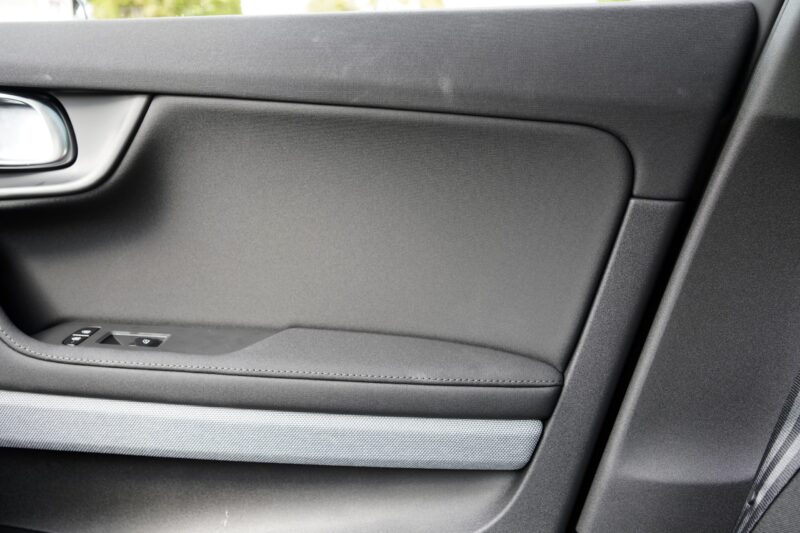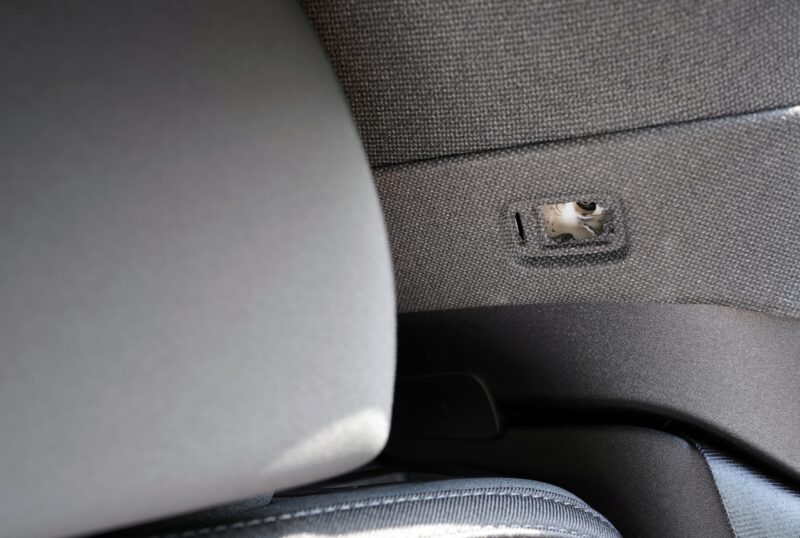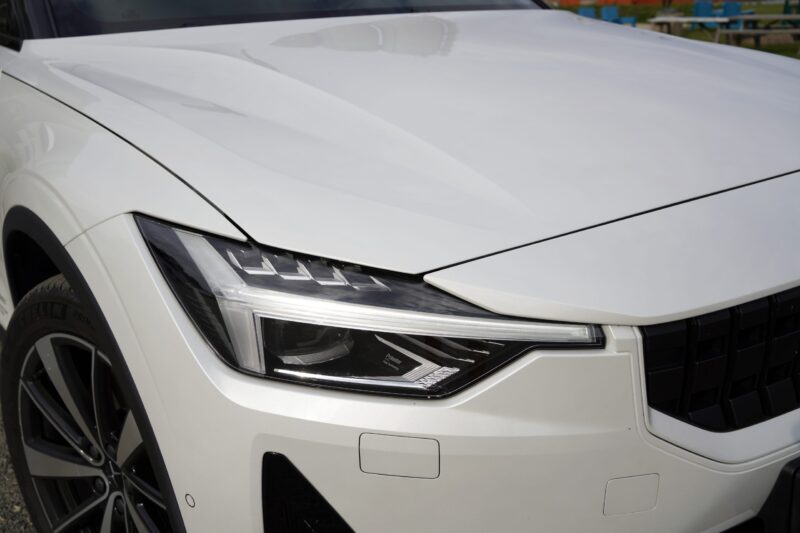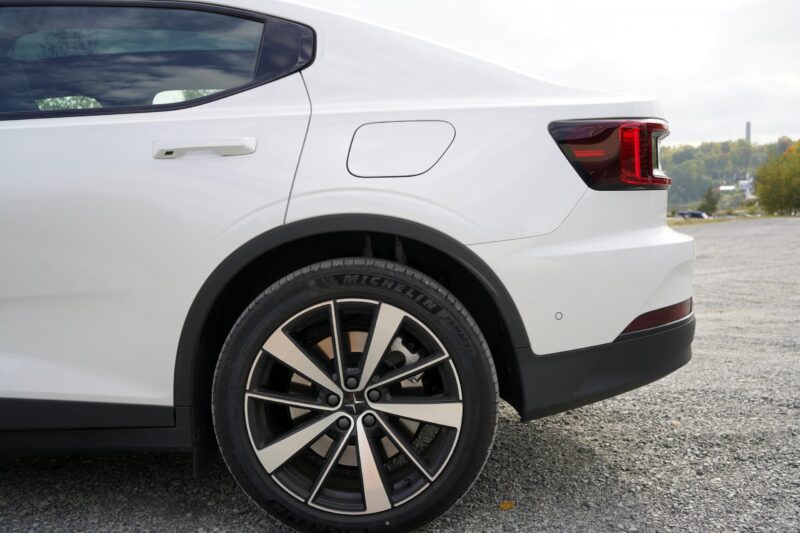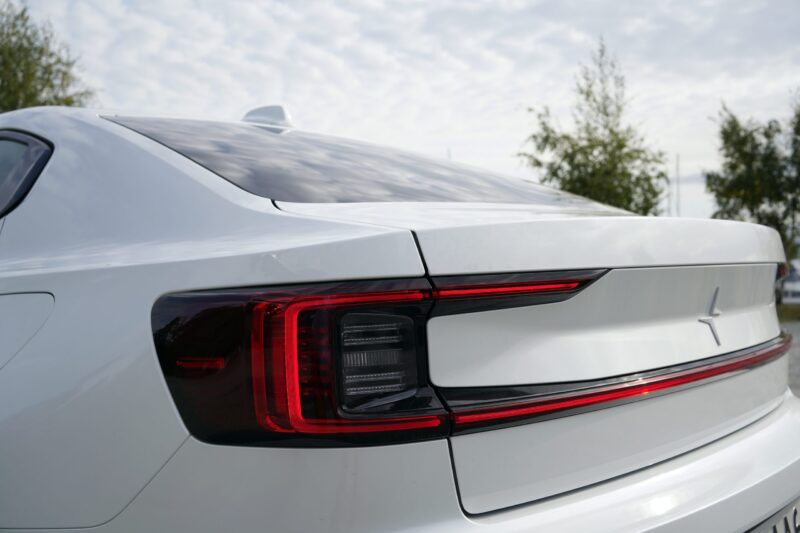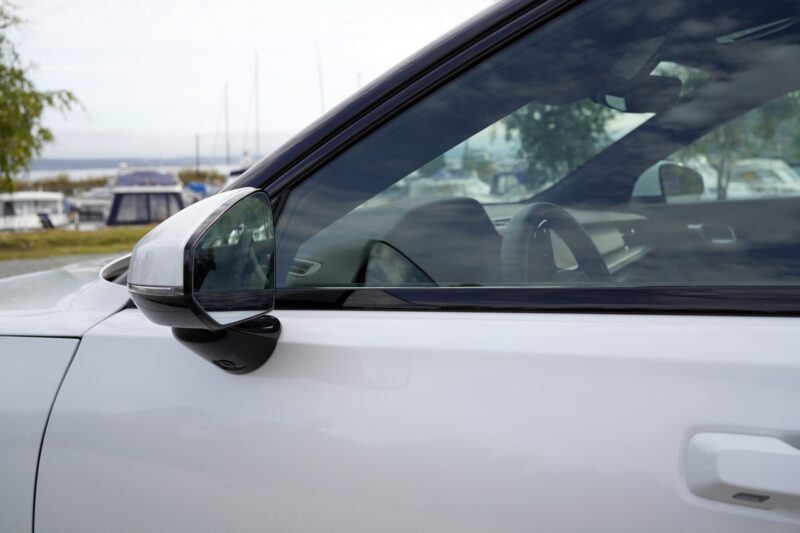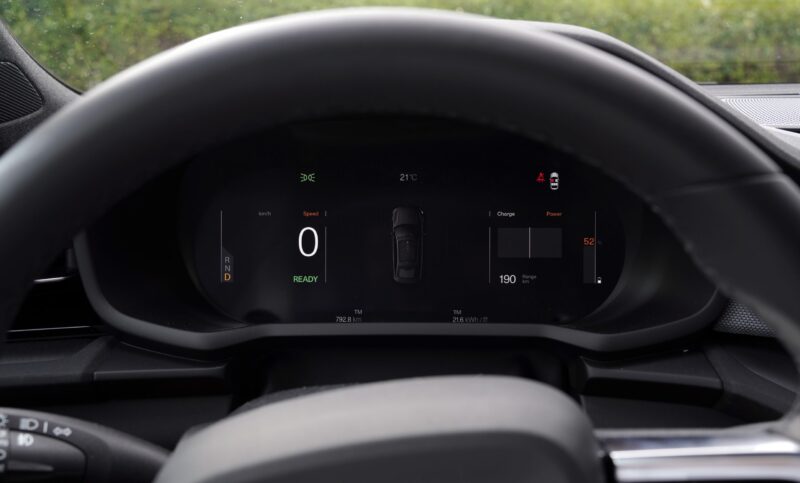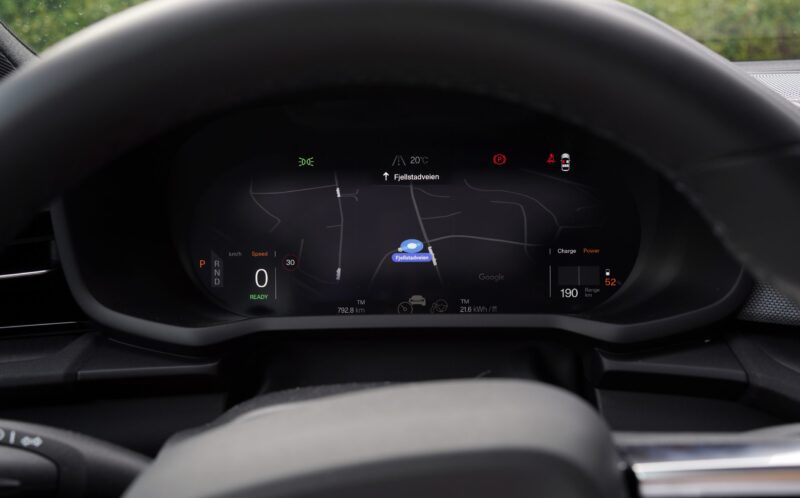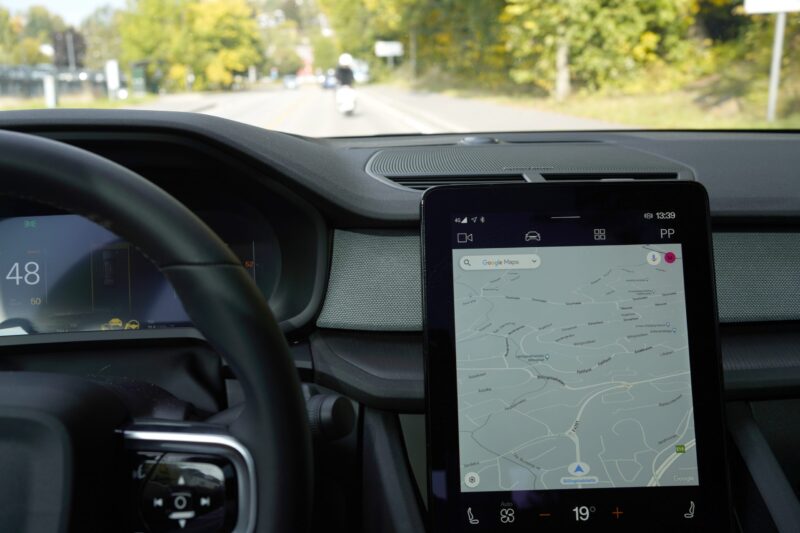The turn comes a little abruptly on me, so I release the gas a little and the car dives easily with the front while the speed decreases quickly. Out of the turn, all you have to do is hold on to the Volvo steering wheel, while the grin increases in step with the extreme acceleration.
At the same time, Radka Toneff’s soothing vocals flow out of the facility, on a background of almost total silence. It’s a lovely feeling.
It strikes me that this is a very good place to be. The comfort is impeccable, the sound from the system is clearly better than in most cars I have driven, and the first impression is that this is a damn good car. If this one does not sell, I will eat my hat.
I’m not in a Volvo, but in the new Polestar 2. The first electric car that can seriously challenge the Tesla Model 3, which has been a success from day one.
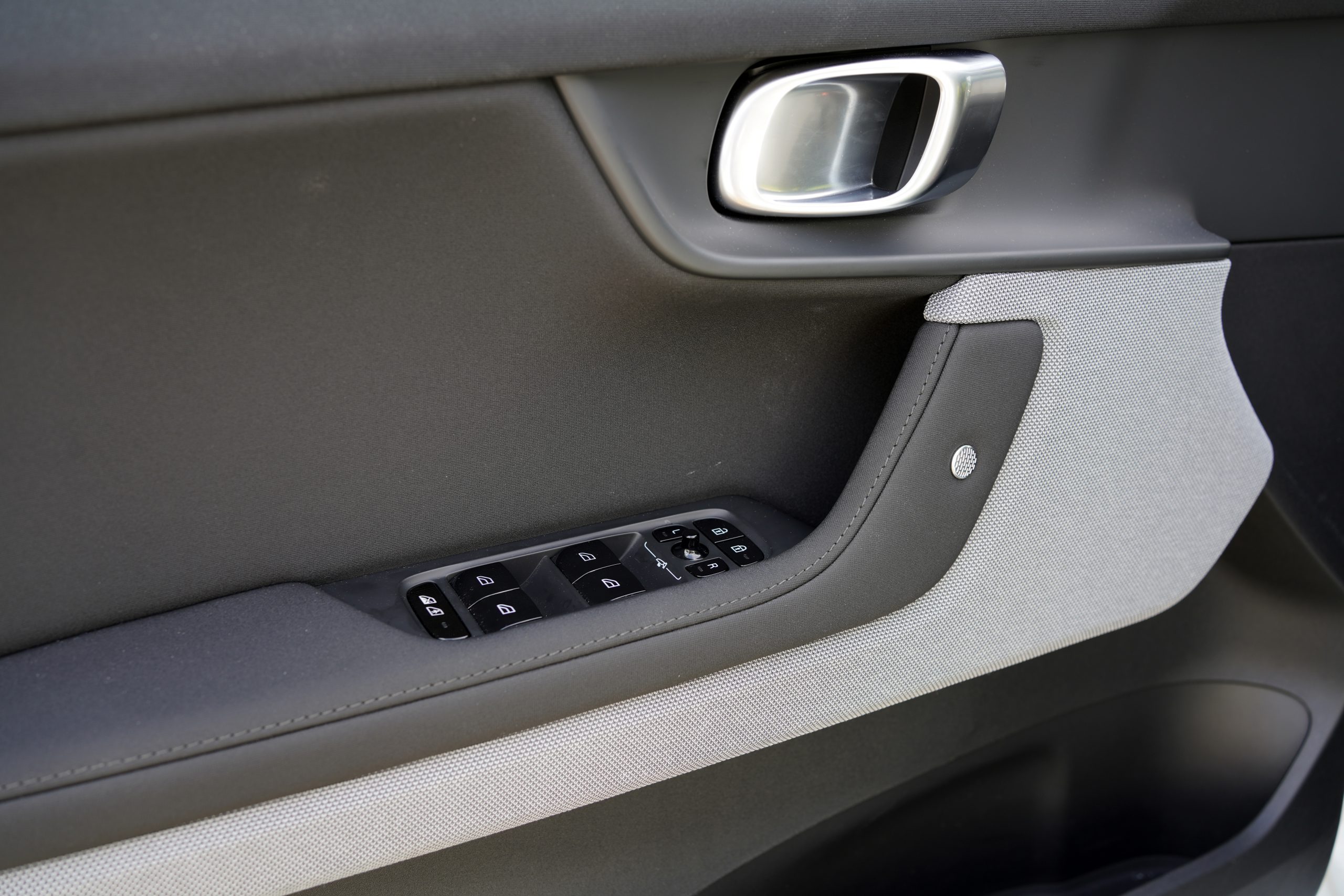
Polestar 2 one that the Volvo steering wheel suggests, closely related to Volvo, but the company is partly owned by Chinese Geely, which also owns Volvo. Confused? Once upon a time, the Polestar was almost like the M division was for BMW. Now they stand on their own two feet as a car manufacturer, not a car tuner, and this is based on the CMA platform on which the upcoming Volvo XC40 Recharge is also built.
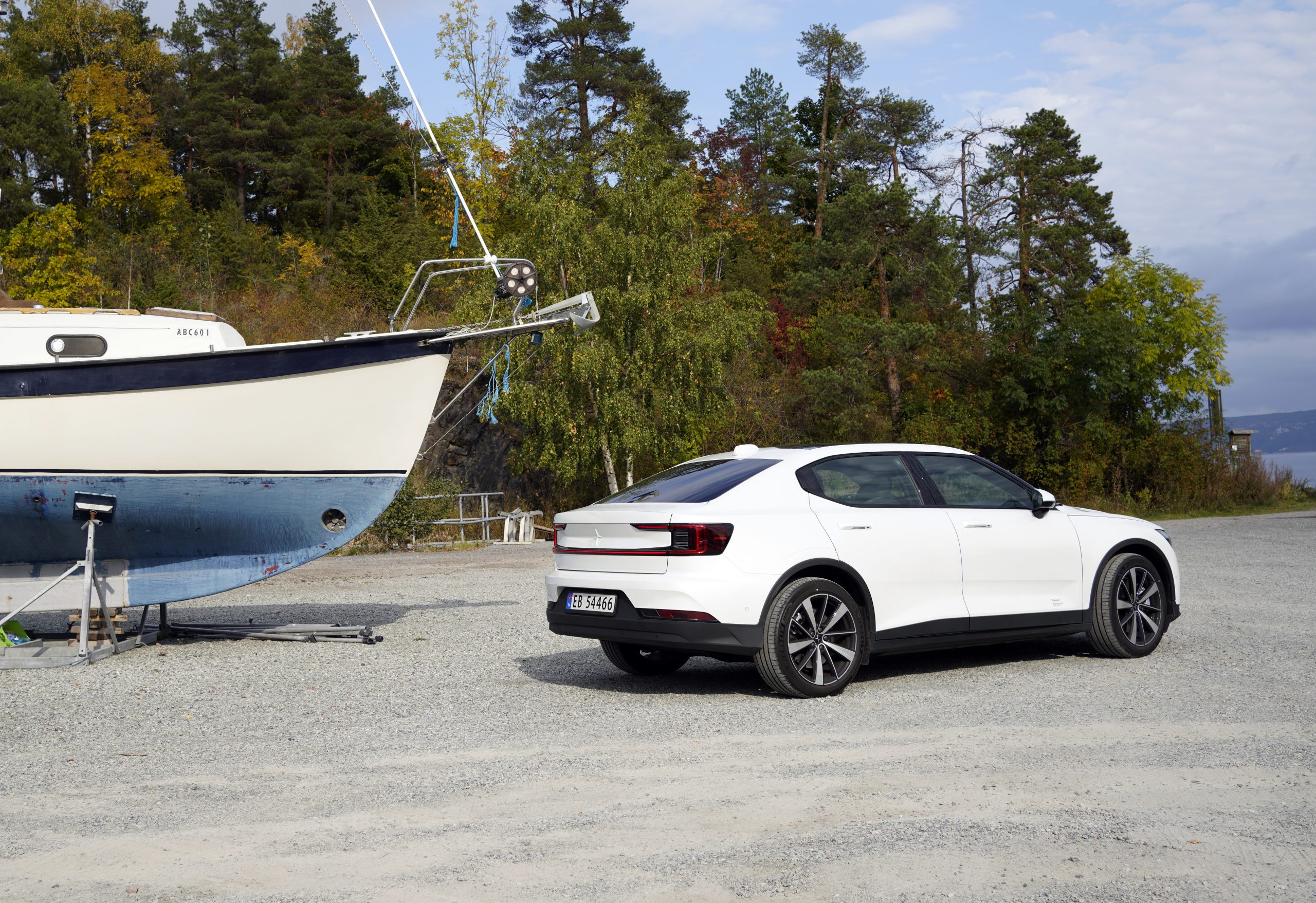
It is hinted at Volvo more inside than outside. The switches for the window lifts, and the steering wheel, are obvious Volvo parts, but Polestar 2 is a separate brand that will stand on its own two feet, and new car models will share platforms with, but be distinctly different from, future electrified Volvo models.
A comparison with the Tesla Model 3 is inevitable. Like the Model 3, the Polestar is a medium-sized five-seater just over five and a half meters from front to rear (4.6m). In other words, in the same segment as a BMW 3 Series or a Mercedes-Benz C-Class, if we compare with cars with internal combustion engines.
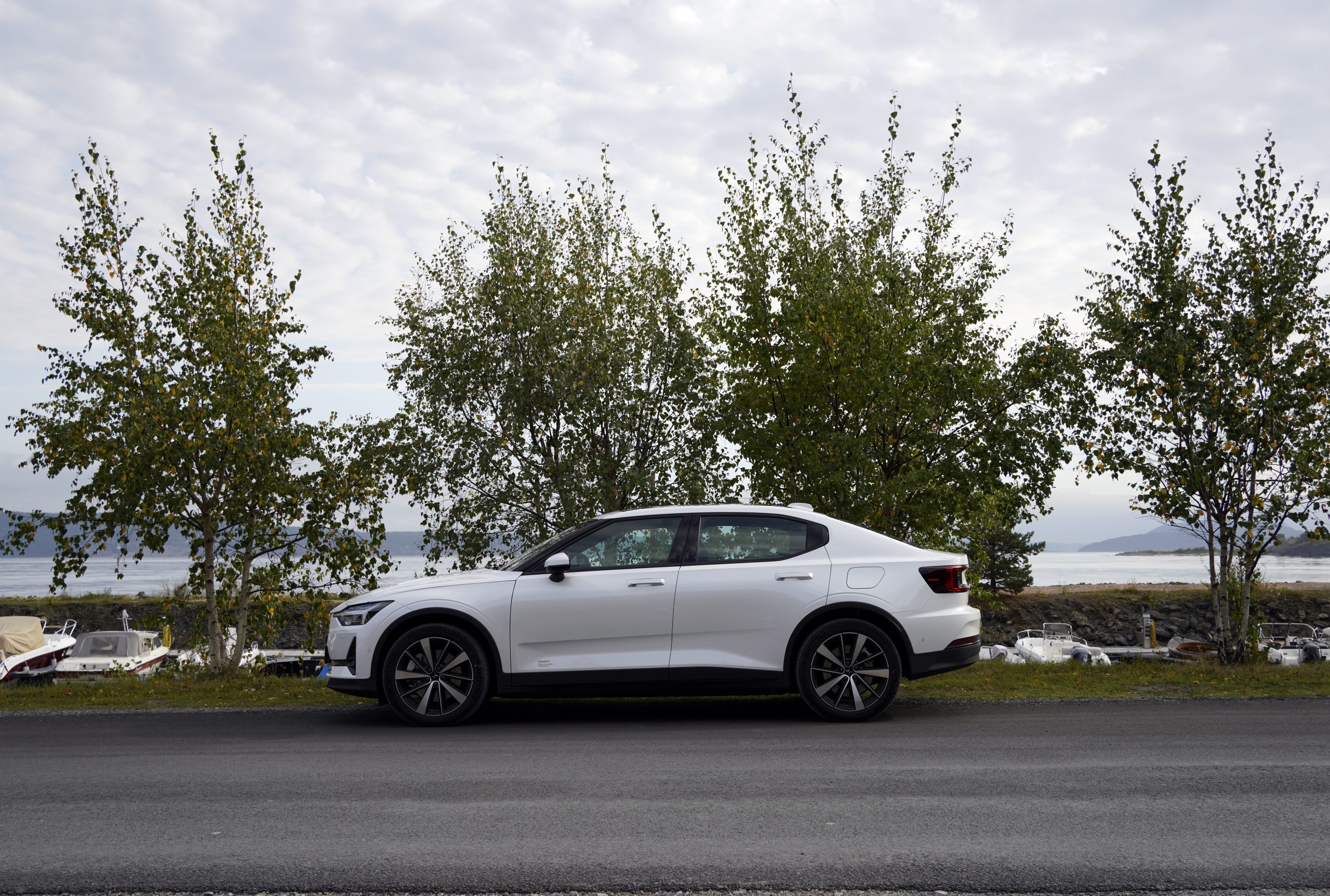
While the BMW i4 and other electrically powered challengers are long overdue, the Polestar 2 is already available on their website, and the car can be studied in more detail at so-called Polestar Spaces. Centrally located show rooms where you can immerse yourself in the few paint colors and interior choices available.
Harman Kardon sound system
It does not feel like a Volvo on the road. The steering response is sharper, more immediate, despite the high weight of almost 2.2 tonnes. The balance in the lighter Model 3 is reminiscent of a ballerina, but although Polestar 2 may be more lightweight boxer than dancer, the balance is almost perfect and it clings to the asphalt like chewing gum on tar.
Inside, the Harman Kardon system creates the atmosphere you want. Whether it’s Metallica or Mozart, the facility helps make the ride an experience. Well helped by little road noise, though the 19-inch and 45-profile Michelin Primacy 4 tires can be heard audibly on the Norwegian, rough asphalt at highway speeds.
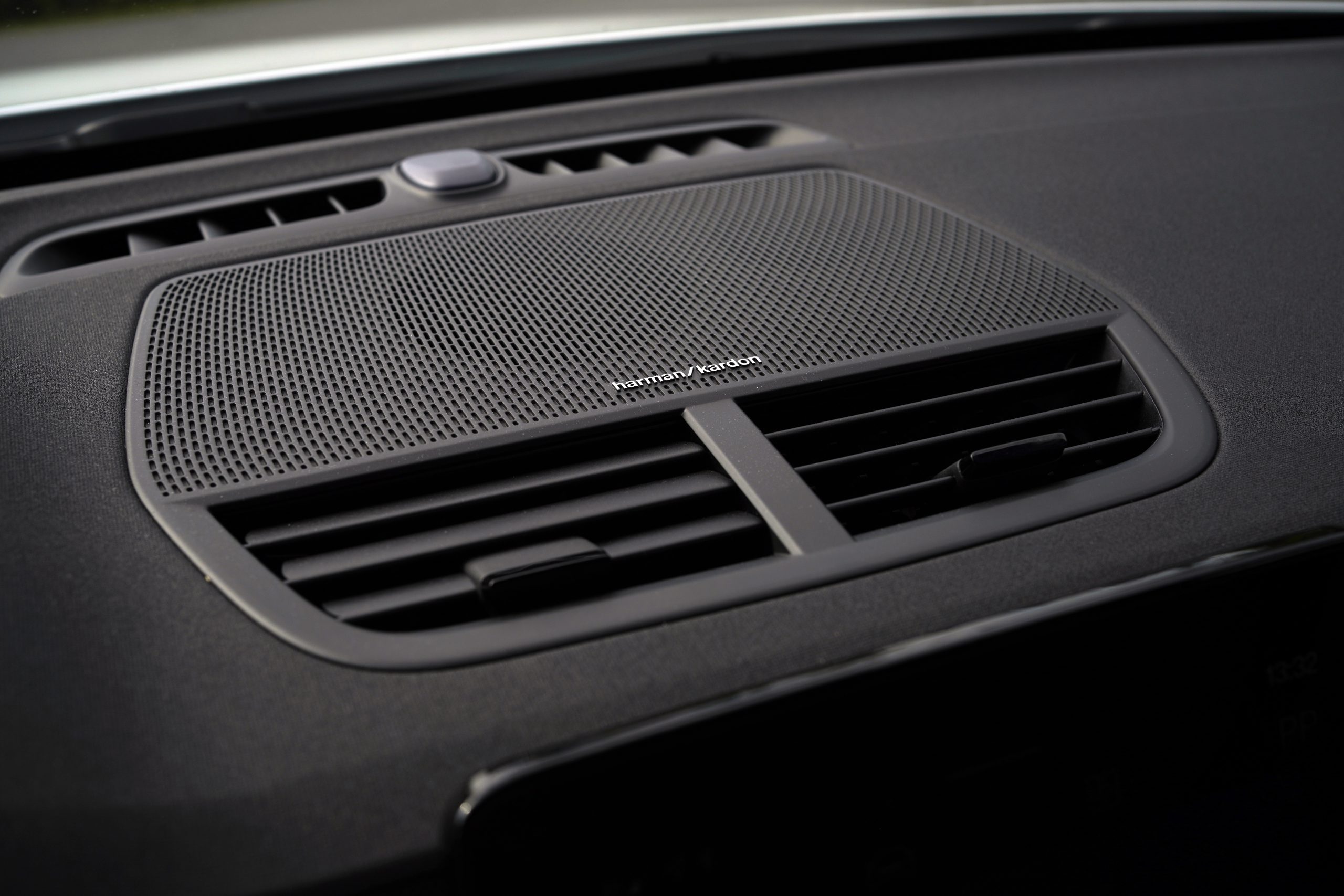
There are slightly fewer speakers here than in a Tesla Model 3, which with its height channels, called HD tweeters, has a total of 15 speakers against 12 in the Polestar 2. But that does not mean that the system is any worse.
Harman has taken Swedish Dirac Unison with it during the development of the system in the car. The process of integrating a sound system into a car can start quite early in the development of a car. It is not just the speakers that must be adapted to fit in doors and posts, the electronics must be integrated seamlessly in the car, and the acoustic adaptation is done individually for each car model.
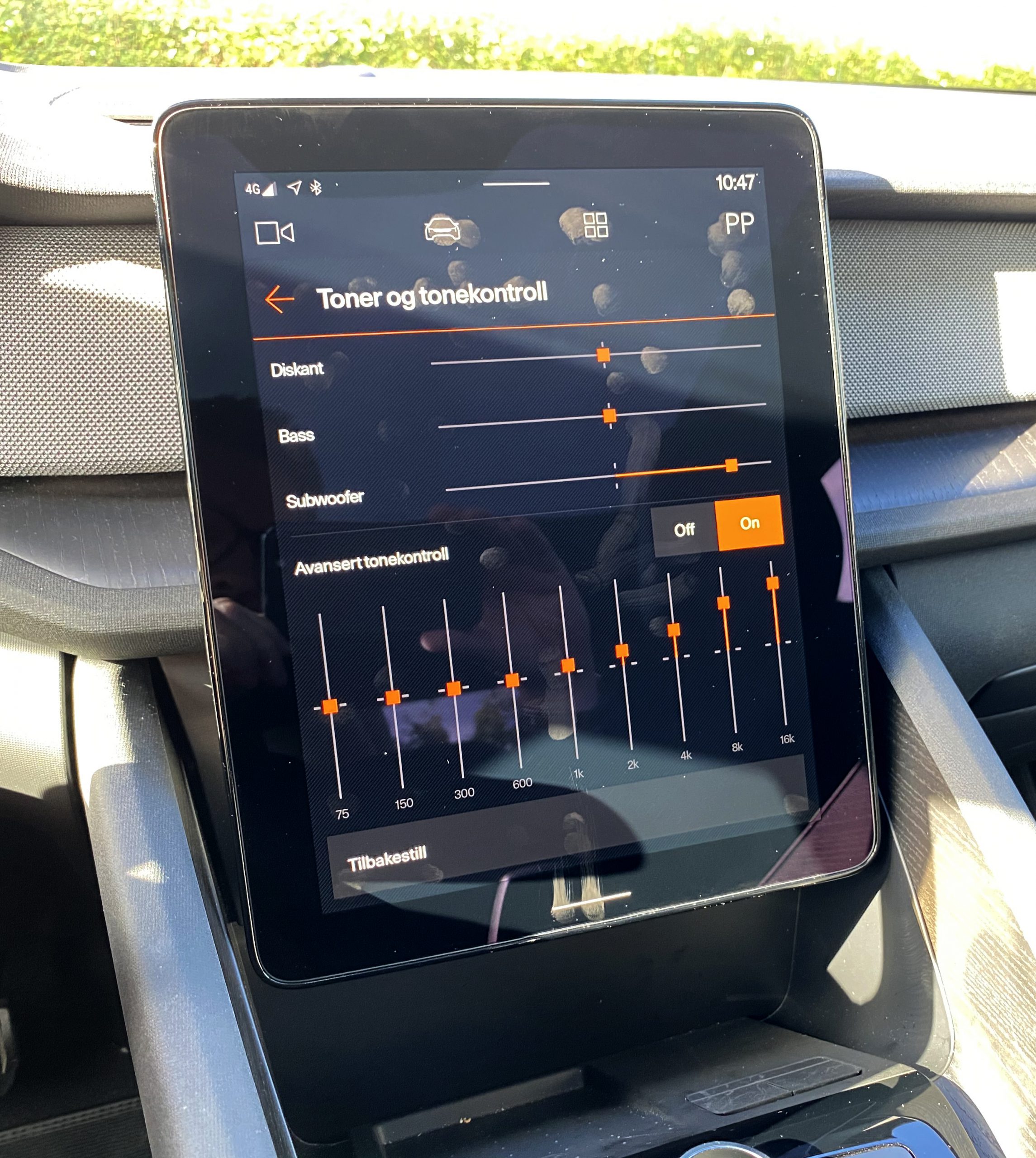
Here, Polestar, Harman and Dirac have worked together to optimize the sound so that everyone, not just the front, will get good sound. Active acoustic adaptation, advanced DSP programming and bass management are specially adapted for Polestar 2, as they say, to provide a sound experience that is as exceptional as the driving experience.
In front, bass / midrange is placed in the doors, treble at the bottom of the A-pillars, and a center speaker in the middle of the top of the dashboard. In the rear seats there are also two elements on each side, but here the bass / midrange sits further down on the doors, and the treble is located at the top of the door sides. Speakers are also located on each C-pillar at the rear, and a subwoofer is integrated in the system, with its own level adjustment from the 11.2-inch screen in the center console.
Sound
The three have succeeded well in integrating the system into the cabin, and there are never resonances or noises even if you turn up the volume to deafening levels.
The bass response is compelling. Tight, powerful and well defined. Even when playing loud. It does not go as deep as an earthquake as in a Volvo XC90 with Bowers & Wilkins, and the sound is not as focused and detailed, but still the sound from strings, vocals and acoustic instruments, believable and well defined, without much coloring of sounds or intrusive artifacts . Like metallic sound, sharp treble or hollow bass.
Dirac has added a 9-band equalizer to the touch screen, and the balance in the sound can focus only on the front seat, or you can choose to have sound only in front, or behind. There are no concert sounds, 3D modes or surround effects – like Tesla’s Immersive Audio, apart from the usual bass and treble control, and subwoofer level.
If you do not do anything with the sound, you get a slightly dull, gray and full sound image, which it never sparkles. It works well enough when the car is stationary, but as soon as you are on the road, the highest tones drown in road noise.
Then you have to use eq to literally lift the frequency response above 1 kHz, and jack up the subwoofer a bit, without exaggerating. The sound from DAB radio is actually good, but as always depends on the bit stream from the provider, which we know can be under any criticism (hey NRK), but where it exists, the sound is clear, dynamic and relatively well detailed. Streaming from your mobile, or Spotify which is available as an app in Google Android on Polestar 2, sounds better.
The bass is better defined, there is more sound in the instruments, and the soundscape is experienced as more open, more immersive and lifts the music experience several notches.
It is still a long way from the sound quality you can get with the Bowers & Wilkins systems that are available as options at BMW and Volvo, and the Burmester which is offered in some models from Porsche and Mercedes Benz.
It is to be hoped that a Bowers & Wilkins plant will be an option in Polestar as well, but so far there is only one plant available, and that is Harman Kardon.
Google Android
Polestar 2 is the first with Google’s Android Automotive operating system. You can see this on the icons on the screen, the navigation with your finger, and how it behaves when you use it. With Google, you also get voice control. It is actually more useful than you think in a car.
You can navigate the music, change the radio channel, ask for directions and enter them in the GPS, ask about everything, such as finding accommodation, a good restaurant nearby, and controlling heating and other functions in the car. Without spending time pressing anything, or digging into on-screen menus. It’s really a liberation. You do not have to drive to the side to send a message, call a hotel and ask for available rooms, or take your attention away from the road, to enter a new route to a destination in the GPS.
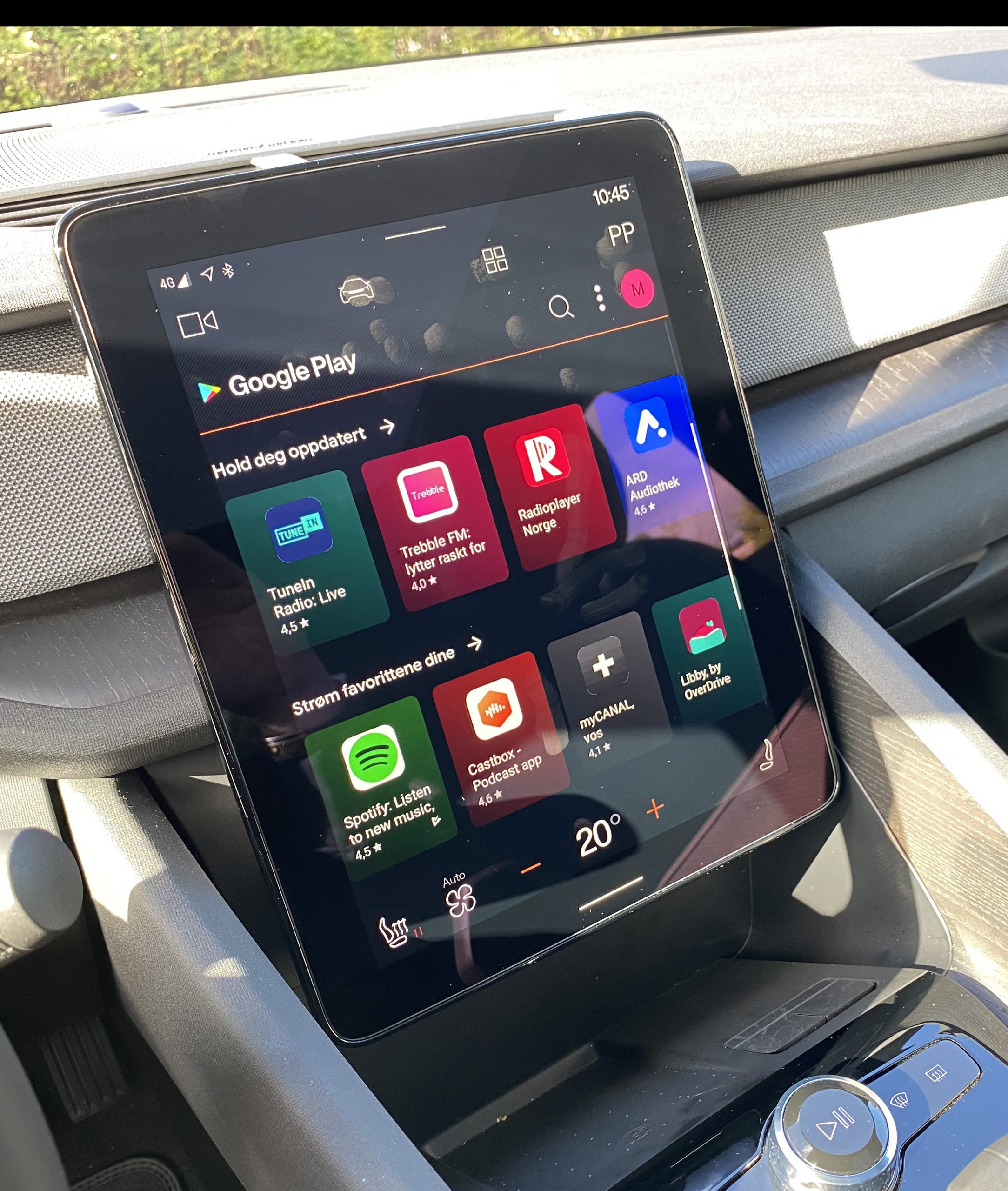
It also works well in practice. Say hello Google, speak clearly, then Google Android will respond positively to the vast majority of questions and commands. For example, finding your way to the nearest charging station.
You can also add apps from Google Apps, such as on a mobile, and you are always online. Three-year connection is included.
For iPhone users who are starting to stumble across Google in Polestar 2, relax. An iPhone also works here, and in 2021 you can also get Apple Carplay in Polestar 2.
Polestar app
If you google and read about Polestar 2, you will quickly find out that the car can be controlled, monitored and configured via an app. It can also act as a key, remotely control the air conditioner, check charging status, and it should be possible to enter driver profiles so that users can select their favorite playlists, radio channels, climate settings, but it will not come until later in 2020.
Until then, you have to cope with the trickiest remote control we have seen. A pale plastic case with indistinct buttons that you have to look at both two and three times to find the right button. It works at least, so unlocking and locking the car works great as long as you have the plastic lump in your pocket. But honestly.
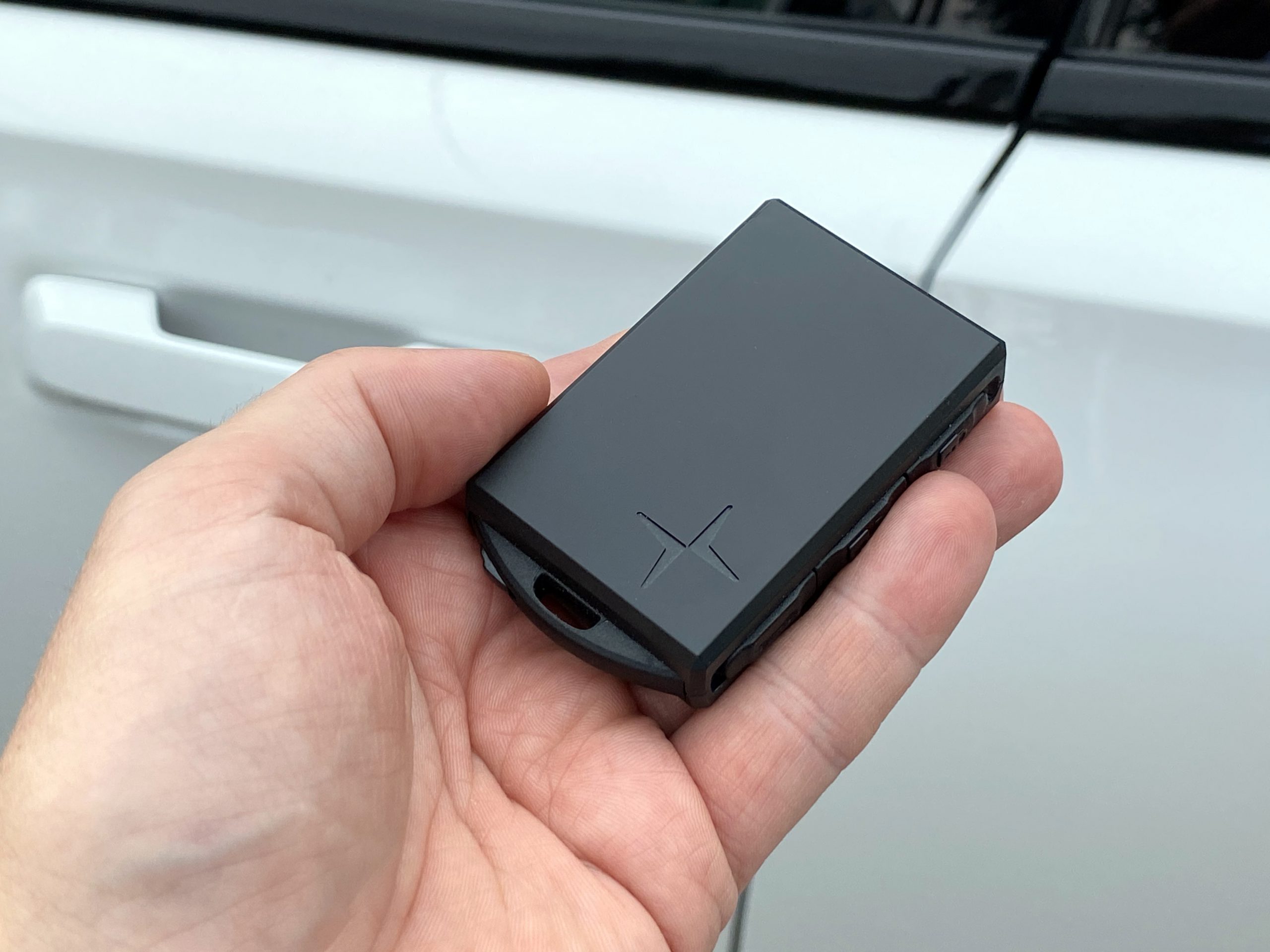
The new 240
With just under 48 hours available, we did not get to dive deep into Polestar 2, but so far everything indicates that this could be a hit on the sales statistics. It has enough space for most people, it can take roof loads, tow trailers and has four-wheel drive. It is also relatively quiet, the quality is trustworthy, it has sporty driving characteristics and good comfort, even if rear seat passengers can suffer below the ceiling height at the rear, and it is very well equipped with, among other things, a good sound system, many safety systems and it is among the faster and fun the electric cars in today’s market. Polestar 2 has the potential to be the next Volvo 240, Volvo’s best-selling car, even if it is called something else. That’s how good it actually is.
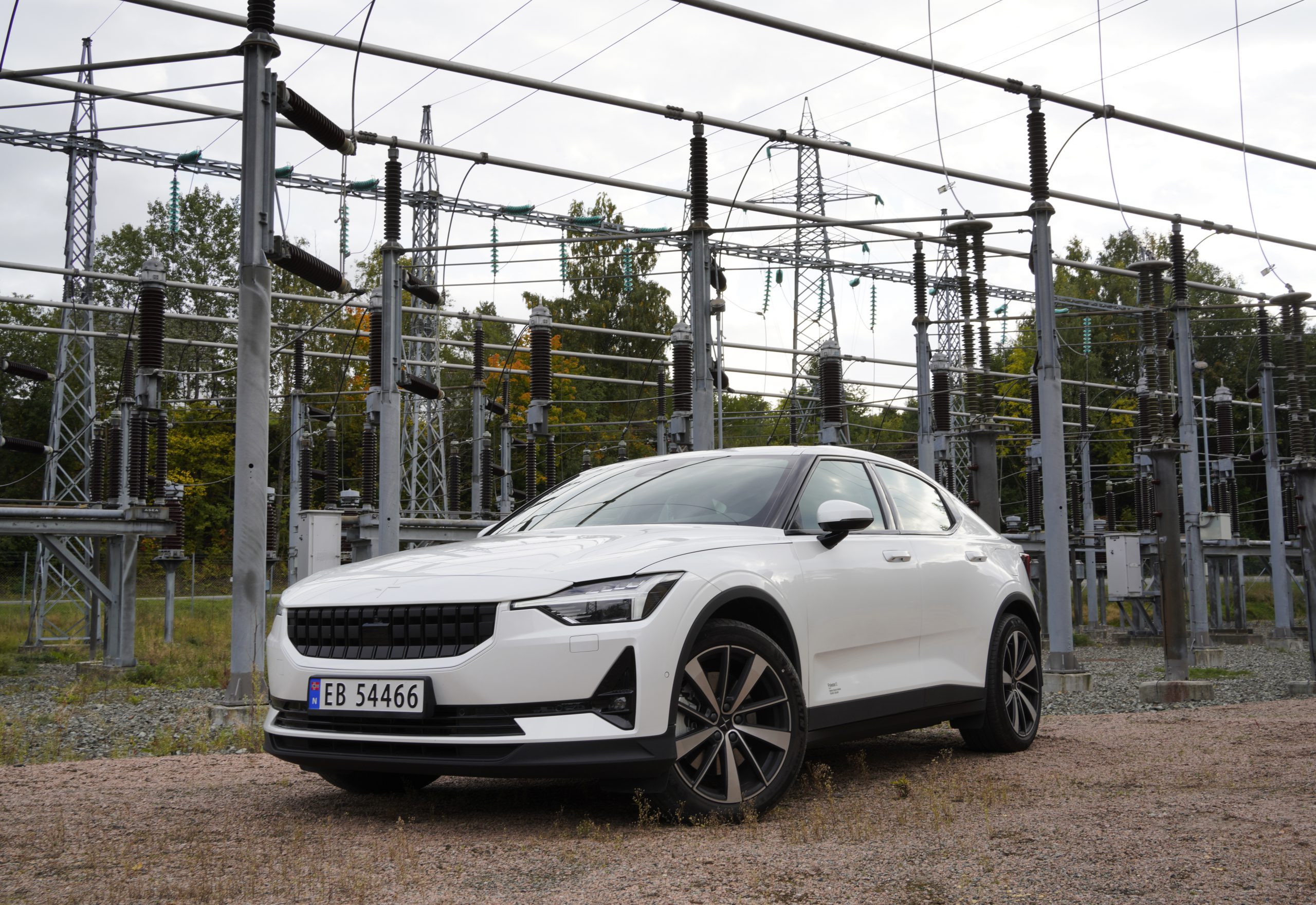
What about Tesla Model 3?
Looking at the specifications, the Model 3 is better at almost everything. It charges faster with up to 250 kW, top speed is higher, range is longer (except the standard version), the Performance version is faster from zero to 100, and it has larger boot volume. It also has more toys, such as gaming mode and prom sounds (quite seriously), and it has set the standard for driving experiences in this electric car class.
It’s not just the design that stands out. The more upright and angular silhouette of Polestar, looks more mature, conservative, almost Volvo-like (no wonder, editor’s note), against the hyper-smooth androgynous design of Model 3.
The headlights are more marked both front and rear of the Polestar 2, while they almost look like they have melted on the body of a Model 3, which looks like a shrunken Model S for many. What you like best may be up to everyone, but there are some things that are more practical on the Polestar 2.
Like the door handles. The first contact with a Model 3 can quickly lead to some low-key insults, because it is not self-explanatory how to get into the car. For those of you who have not yet sat in a Model 3, I will not reveal anything. You get to try your hand at it.
Another thing you quickly notice is that there are two screens and several buttons in a Polestar 2. The driver gets a 12.3-inch, configurable screen in front of him, with almost more than a lot of information, buttons on the steering wheel of a number functions, and separate buttons for defrost, heat in the windows front and rear – and start-stop of the music, and a volume control that both driver and passenger can operate.
Like the Model 3, it has two cup holders. However, the huge center console takes up so much space that one cup holder is far behind, between the seats, and the front one is located under the sliding armrest. On long trips, you have to choose between drinks or comfort.
The interior quality is noticeably better in the Polestar 2, with better material quality, thicker upholstery, and better noise reduction, but some details detract from an otherwise solid impression. The coarse plastic quality in the door sides, absorbs stains and scratches, the curved plastic edge around the center console seems thin and cheap, and it has a marked edge on the inside that does not align nicely with the wood fiber decoration.
The roof cover seems cheap, like hard plastic covered with synthetic textile, and the recycled fabric cover in the otherwise excellent seats, gives no premium feeling. And, if you put the phone on the wireless charger in the center console, you do not see the screen. It may be intentional, but still.
But, the big tailgate is a huge plus. Unlike on a Model 3, it opens all the way up to the ceiling, and the combi solution makes the Polestar 2 more convenient to load in, than in a Model 3. Which has a letter gap compared to this. At the back there are also five load hooks, hooks for shopping nets, a small room under the floor – which also has a fold-down divider, and a 12 V socket. In front of the hood, there is a small room of 35 liters with space for a weekend bag. There, under the bottom that can be lifted up, you will find the warning triangle and the tire repair kit.
A not insignificant issue for many of Polestar’s customers is the possibility of service at Volvo’s large network of workshops in the Nordic region.
Versions of Polestar 2
There are not many choices you can make when ordering a Polestar 2. Unlike the Model 3, there is only one choice of driveline, but like the Model 3, there are very few choices of paint colors and interior colors.
You can choose between six paint colors, black or gray recycled seat covers with black veneer-like composite decor made of wood fiber, or ventilated seats with beige, vegan imitation leather and birch veneer-colored decor, 19- or 20-inch wheels, and a Performance package – for those who want an even sportier Polestar 2. Which consists of 20-inch wheels, better brakes from Brembo, mechanically adjustable dampers from Óhlins, and inside you get seat belts in a warm yellow color, and inlaid segments in high gloss in the ceiling.
There is not much else to choose from. The accessory is limited to roof racks, charging cables, child seats, floor mats, chains or Autosock and semi-electric towbars that can carry a maximum weight of 1500 kg.
The driveline that it shares with the upcoming XC 40 Recharge, consists of two electric motors that each drive their own axle, giving the car four-wheel drive. The battery architecture is based on 400 V with 78 kWt capacity, and the car supports fast charging up to 150 kW, and it should be possible to charge from zero to 80 percent in 40 minutes. The stated range is 470 km, according to the WLTP standard.
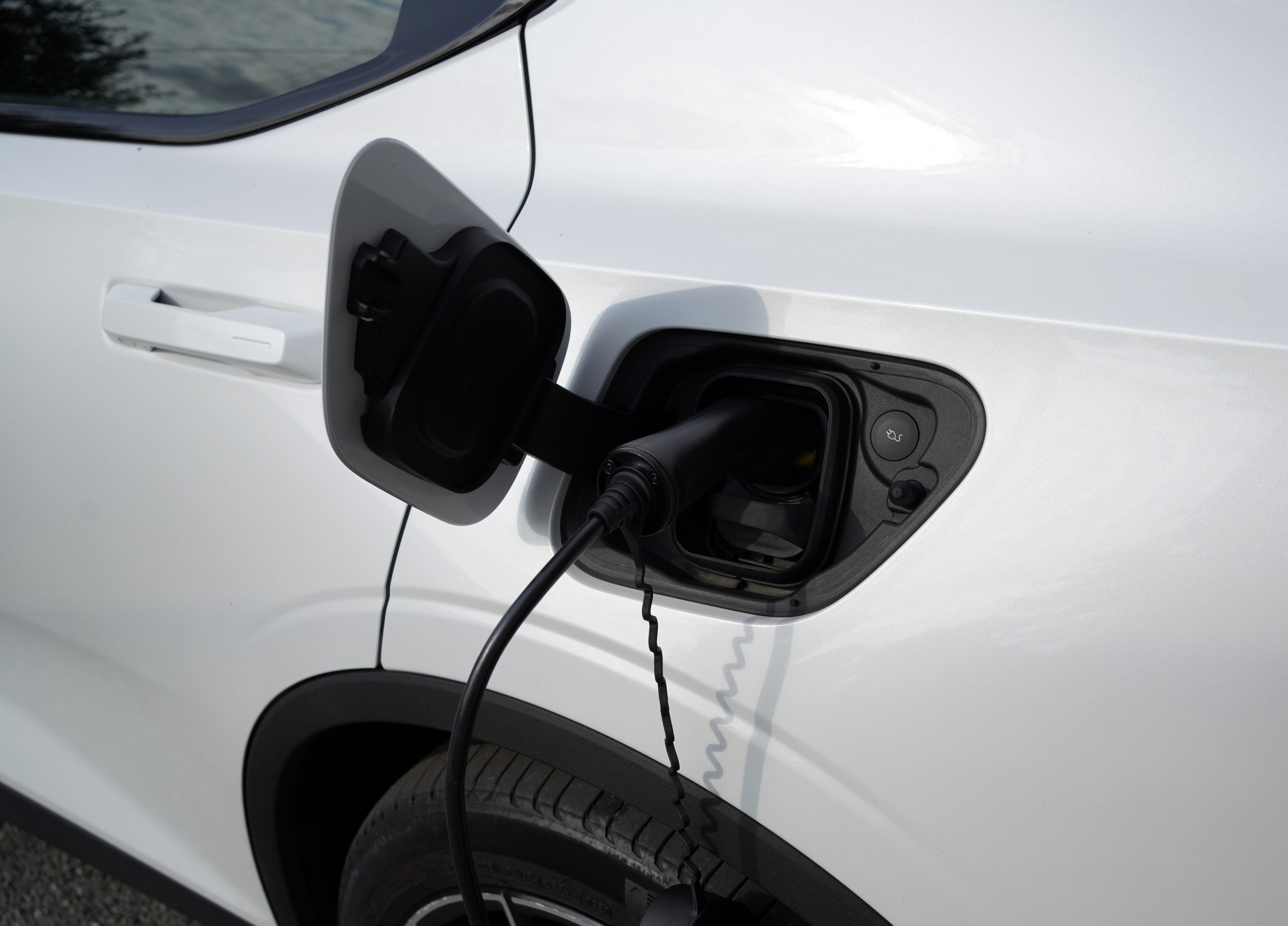
Pilot and Plus packages
The starting price for a Polestar 2 is 46,900 in black, here called Void, with black or gray interior, 19-inch rims and no extra equipment. Many may not need it, because the car is very well equipped even in the basic version.
All editions have the Pilot and Plus package included. Which includes collision warnings with brake and steering assistance – Advanced Driver Assistance System (ADAS), adaptive cruise control, sign recognition, 360-degree parking camera, blind spot warning, and self-driving with the hand held. You must therefore confirm that you are conscious by holding the steering wheel lightly, then the car follows the road and steers and brakes itself. At least in theory.
It also comes with glass roof with UV protection, electrically adjustable seats with memory, seat heating front and rear, steering wheel heating, heated windshield wipers, wireless mobile charging, LED lights at the front, cornering lights and USB connectors at the front and rear.
The Harman Kardon system is standard.
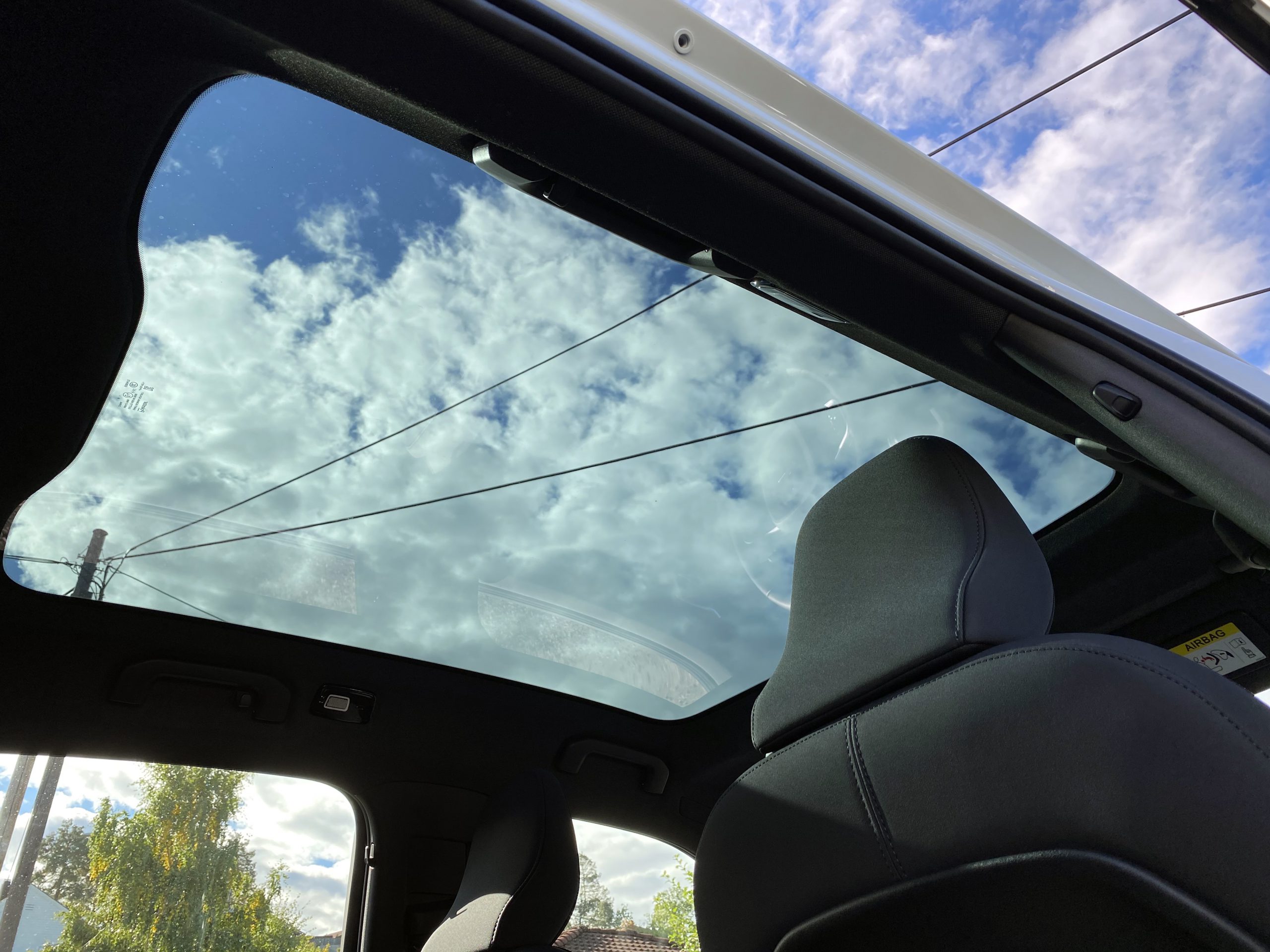

We think
Fantastic combination of driving pleasure, comfort and entertainment. The sound quality from the Harman Kardon system is a big bonus, and Google Automotive works flawlessly. The range is good and the speed resources are addictive. The design stands out positively and inside the quality is higher than on the Tesla Model 3. Practical combi hatch. Very much car pleasure for the money. Lots of noise from the low profile tires on the highway. The center console steals a lot of space, varying quality impressions. The height of the back seat is a challenge for those over 180 cm.
46900 €
Specifications
- Equipment package: Pilot, Plus, Range: 470 km (WLTP)
- Battery capacity: 78 kWt
- Charging capacity: 150 kW
- Energy consumption: 15.6 kWt / 100km
- Power: 300 kW / 408 hp
- 0-100 km / h: 4.7s
- Net weight: 2198 kg, empty weight
- Number of speaker elements: 12
- Amplifier: not specified
- Speaker setup: 11.1 channels
- Other: Touch screen control, equalizer, streaming
- Web: polestar.com
